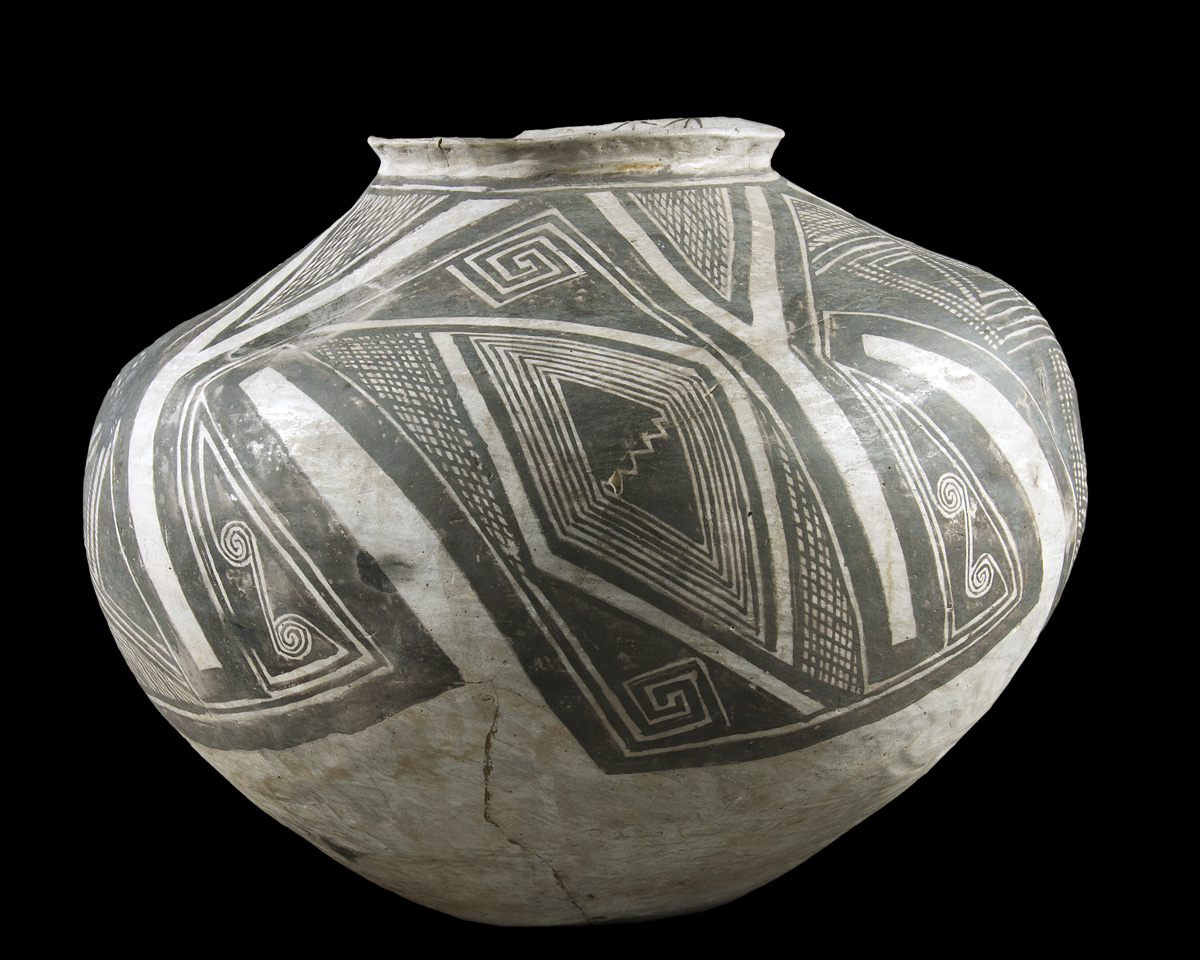Kayenta Black-on-white is type of Tusayan White Ware with finely executed designs that was made primarily in the area between the Tsegi canyons and Hopi Mesas of northern Arizona. The olla pictured above is also interactive!
Archaeological Culture: Ancestral Puebloan, Kayenta
Date Range: Kayenta Heartland: A.D. 1260-1330 (Christenson 1994), Flagstaff Region: A.D. 1250-1290 (per Christian Downum, Northern Arizona University).
Construction: By coiling.
Firing: In a reducing atmosphere.
Core Color: Usually light gray.
Carbon Streak: Rare.
Temper: Not very abundant fine quartz sand, frequently almost invisible; occasional small opaque angular fragments.
Surface Finish: Bowl interiors and jar exteriors, compacted, well-polished.
Surface Color: White to light pearl gray.
Forms: Jars predominate, colanders, and bowls.
Vessel Thickness: 2.2 to 8.6 mm (bowls).
Decoration:
- Paint: Black, occasionally brownish almost always rich and dense, never gritty.
- Pigments: Carbon, sometimes indicates of iron.
- Design: Execution is excellent, characterized by negative or mosquito bar effect, wide stripes frame rectangular or triangular panels in which occur narrow-line cross-hatching, usually diagonal, with solid elements as triangles, bars, stepped elements, occasionally opposed stepped elements in panels without hachure, rarely interlocking scrolls or finely barbed wide lines or stripes.
Comparisons: Hoyapi Black-on-white, surface color never dead white, often fairly dark pearl gray; decorated surfaces less well polished, scraping marks often conspicuous on unpainted surfaces; execution of design considerably less excellent; hatchure lines not always exactly parallel or evenly spaced; paint generally gritty and frequently purplish in spots.
Betatakin black-on-white, surface color never dead white, often dark pearl gray; painted surfaces only moderately polished, scraping marks often conspicuous on unpainted surfaces; execution of design considerably less excellent; open work rather than negative design.
Other Names: Black-on-white Ware, Kayenta Black-on-white Ware, Tokonabi (Kayenta) Ware, Sagi Black-on-white.
Compiled from the following sources:
Christenson, Andrew. (1994) A Test of Mean Ceramic Dating Using Well-Dated Kayenta-Anasazi Sites. Kiva 59(3):297-317.
Colton, Harold S., and Lyndon L. Hargrave. (1937) Handbook of Northern Arizona Pottery Wares. Museum of Northern Arizona Bulletin 11, Flagstaff, Arizona.
Compiled by:
April Peters, Northern Arizona University Anthropology Laboratories.

